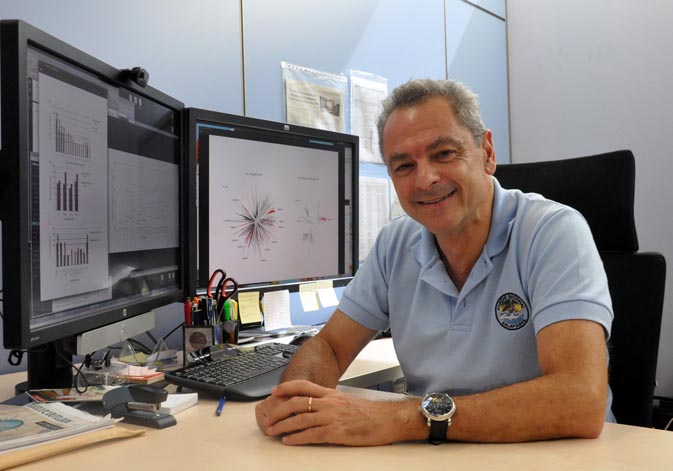The evolutionary history of AIDS, hepatitis and flu virus is reconstructed for the first time by the interaction among the parts of the genome
- Scientific Culture and Innovation Unit
- March 23rd, 2018

Researchers from universities of Valencia and Oxford, FISABIO and CIBER, one of them the genetics professor Fernando González, have developed a mathematical model. It explains the phylogenetic tree of the ARN viruses (those that use ribonucleic acid as a genetic material) depending on the form through which interact some parts of the genome. The study, published in the “Genome Biology and Evolution” journal, explains that this interaction (called secondary structure) is the key to understand how the virus of AIDS, hepatitis and flu have evolved.
“The main innovation of this study is the statistically accurate comparison among the different mathematic models that enable us to reconstruct the history and the evolutionary relationships of ARN viruses”, explains Fernando González, from the Universitat de València. These evolutionary relationships are important and very useful to understand the mechanisms of action of viruses in order to relieve the negative consequences to both humans and cultures.
The research also lets us understand “with greater accuracy the manner in which ARN viruses evolve from their hereditary material”, ensures the researcher of the FISABIO (Vaccine Research Area in Foundation for the Promotion of Health and Biomedical Research). These include the human immunodeficiency (HIV), the hepatitis C and flu virus.
“These viruses and viroids (plant pathogens), cause significant damage, both personal and economic. Our study provides more accurate methods that help us to reconstruct relationships among viruses, how they are epidemically spreading, or which have been the original sources”, explains Fernando González.
Juan Ángel Patiño and Oliver G. Pybus have been participated in this research. It has been done informatically, analysing evolutionary reconstructions of genome parts with different mathematical models of the evolution (considered as the secondary structure). An it have been compared with restrictions that are impose to change, and other that don’t impose this restrictions. In these kind of studies usually is obviated the secondary structure of viruses, but in this project it has been taken into account for extracting valuable information. As the professor of Genetics of Universitat de València explains, “these interaction are what we called secondary structure and they represents an additional level of action from the selection at a molecular level. It is not usually considered in the reconstruction of the evolutionary history of these viruses”.
The main research of Fernando González is focused on evolutionary genetics, evolutionary epidemiology and molecular, molecular genomics and of systems, bioinformatics and conservation biology. Juan Ángel Patiño is also currently postdoctoral researcher at Columbia University in New York (USA). He develops his present research at the implementation of phylogenetic methods in the analysis of the viruses evolution.
Article:
Juan Ángel Patiño-Galindo, Fernando González-Candelas, Oliver G Pybus; «The Effect of RNA Substitution Modelos donde Viroid and RNA Virus Phylogenies», Genome Biology and Evolution, Volume 10, Issue 2, 1 February 2018, Pages 657–666, https://doi.org/10.1093/gbe/evx273













